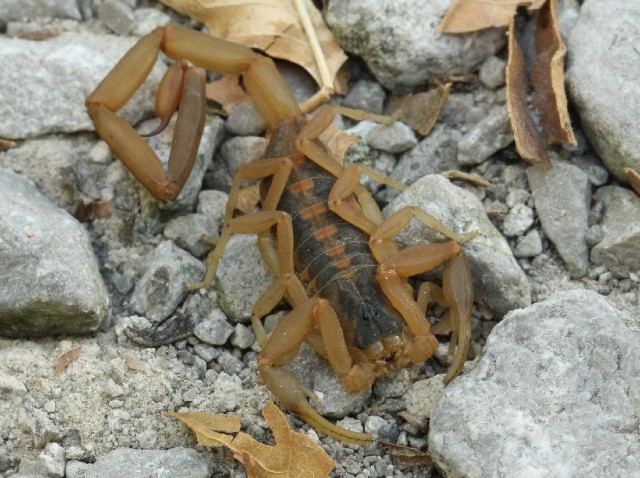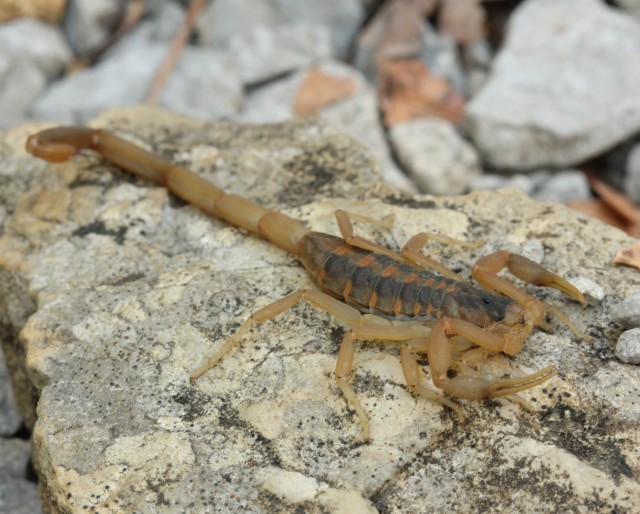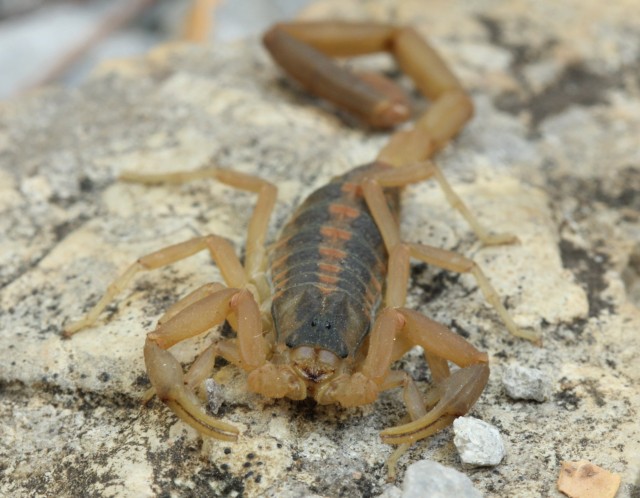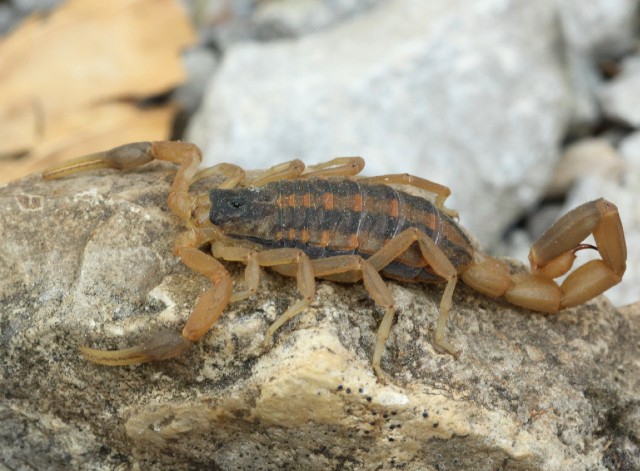I found many examples of this cool creature while exploring glades in Missouri. The Striped Bark Scorpion is an extremely common scorpion found throughout the midsection of the United States and northern Mexico. It is perhaps the most frequently encountered scorpion in the United States. It is the only species of scorpion in Missouri.
At less than three inches in total length, the Striped Bark Scorpion is easily identified by being a uniform pale-yellow in color with two dark, longitudinal stripes on its back. Their color and pattern suits their environment well, providing them with a natural camouflage protecting them from predators and hiding them from prey. Another key characteristic to distinguish this species is a dark triangle on top of its head.
Its wide geographic distribution allows it to occupy desert, deciduous and coniferous forest, temperate grassland and glades. During the daytime, Striped Bark Scorpions spend a substantial amount of their time under rock and surface debris, within vegetation, and in weathered rural structures such as old sheds and barns.
Active at night, they hunt and eat arthropods, preferring soft-bodied prey such as spiders, cockroaches, ants, crickets, beetles and moths. Small prey is eaten immediately. Large prey is stung with venom and eaten after it stops moving. This animal’s defense mechanism is to sting while running away. While a sting from this species is very rarely deadly, it is painful and causes localized swelling.
Unlike most species of scorpion, the Striped Bark Scorpion is social, presenting it with more opportunities to mate and compete for mates. Females produce 50 or more young per brood. Born live, the young are carried on her back for five to 15 days. After that time they are on their own. They have a lifespan of two to five years. Although common, this was a neat find!





